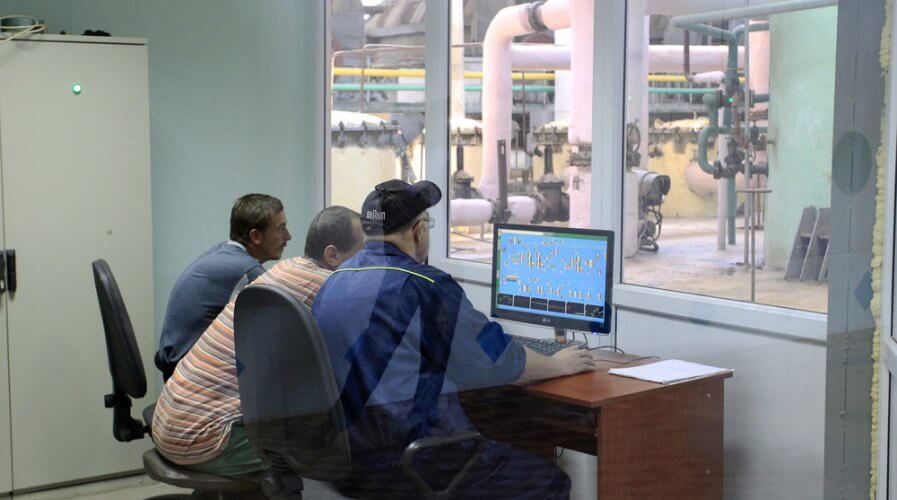
RPA is gaining popularity in today’s businesses. Source: Shutterstock
Calculating the cost of robotic process automation
RPA, short for robotic process automation, is a great first step to digitizing processes. It helps businesses become more efficient and allows them to do more with less — but is that really true?
Most consultants suggest that the cost of implementing an RPA solution is low — significantly lower than the cost of building an artificially intelligent system to automate a certain task within the organization.
Unfortunately, most businesses learn the hard way that RPA is a great solution, but it does demand a fair share of attention and resources before the organization can reap the promised dividends.
The cost of actually owning an RPA product is usually broken down into the cost of development, the cost of change, and the cost of management. Let’s dive in to learn more about these now:
The cost of development
RPA solutions can either be implemented out of the box, or be custom scripted, depending on the task that needs to be automated.
Off the shelf RPA solutions are useful for businesses that want to automate tasks on new-age solutions and ordinary software. For other tasks, especially for those related to custom-built software packages, moderate to high scripting and development is usually required.
Say, for example, you’d like to automatically post invoices emailed to you, to your accounting software.
If your accounting software is one that is widely available in the market and quite popular, there are high chances that your RPA vendor will provide you with the integration to build the automation right out of the box.
However, if your accounting software has been custom-built for your business because it needs to report in multiple currencies and serve multiple organizations under the same parent company, it’s unlikely that your RPA vendor will have a readymade script for you to use. Hence, custom scripting will be inevitable in this case.
As a result, organizations still running custom-built and legacy software packages will find that the initial costs of deploying RPA are higher than what is usually advertised. However, cost efficiencies usually outweigh the higher costs, at least in the medium to long-term.
The cost of change
Change is the only constant. This is especially true in today’s organizations where new-age technologies are constantly disrupting the industry and creating new opportunities.
Every business in this landscape must work hard to ensure that they’re making the most of the technologies available to them and that they’re delivering on customer expectations. Every change they make will invariably impact tens or ever hundreds of processes that support that change — and the RPA solution must be “adapted” accordingly.
If you’ve got an out of the box solution in the first place, this shouldn’t be an expensive proposition. However, if your business requires custom-built applications, then this might be quite expensive and time-consuming as you’ll need to re-script all of the automations you initially developed.
Businesses need to factor this cost into their RPA project estimates and also take into consideration that such changes might be recurring and therefore, bear in mind that the costs might be recurring too.
The cost of management
Managing your RPA scripts isn’t a huge expense, at least not initially. However, as your portfolio of automations increase and you scale the solution across your organization, you’ll realize that you’ve got several scripts running simultaneously.
At this stage, especially when different divisions such as operations, finance, and human resources deploy their own RPA scripts and the organization needs to drive efficiencies and ensure none of the scripts malfunction, return an error, or fail altogether — creating an RPA management team is important.
The team usually starts off as a small support team and evolves into an RPA Center of Excellence (CoE).
Its core function is to ensure the appropriate management, reporting, and governance of RPA scripts. However, a significant and important role it plays is in evaluating the continued necessity of each RPA script and the possibility of combining several RPA scripts — often from different departments — to increase productivity and boost efficiencies and cost savings.
Businesses considering automation need to take all three of these costs into consideration before deploying RPA, especially for those that want to scale up their RPA library and automate as many tasks as possible.
RPA is one of the most cost-effective ways to automate and usually delivers on ROI forecasts quite quickly. Keeping all the costs in mind will ensure that expectations are set right and met on time.
READ MORE
- Ethical AI: The renewed importance of safeguarding data and customer privacy in Generative AI applications
- How Japan balances AI-driven opportunities with cybersecurity needs
- Deploying SASE: Benchmarking your approach
- Insurance everywhere all at once: the digital transformation of the APAC insurance industry
- Google parent Alphabet eyes HubSpot: A potential acquisition shaping the future of CRM






